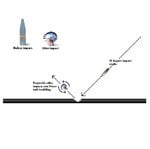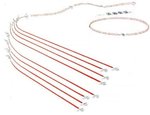- Thread starter
- #61
I can see why there is such a misconception regarding this issue. Plan_D said, "At 880 m/s with a 50% decrease in energy it would be around 400 m/s when hitting the tank."
Nothing could be further from the truth. Lets go back to Ballistics 101.
If a round loses 50% of it's energy, that is not equivalent to losing 50% of its velocity. Remember this rule of thumb. Double the mass, double the energy. Double the velocity, quadruple the energy. A loss of 50% velocity is thus a much, much greater than 50% loss of energy.
As for the actual velocity of a round that has ricocheted up onto the surface of the belly of a tank, consider this:
The round will lose velocity as it travels en route to the ground. It will then lose an enormous amount more after striking the ground. The greater the angle upwards, the more velocity that will be lost. The round then, whether or not rendered flat will be deformed and no longer be flying true along its concentric axis.
This same round, now slowed down quite a bit, and which is flattened to some degree will strike "sideways" to some degree. Thus, it's remaining energy will be transmitted over a much larger area than had it just struck the tank outright.
No, several slow rounds striking at different locations at different angles in various states deformity and in various states of "sideways" flight will not penetrate 25mm of hardened armor plate.
Nothing could be further from the truth. Lets go back to Ballistics 101.
If a round loses 50% of it's energy, that is not equivalent to losing 50% of its velocity. Remember this rule of thumb. Double the mass, double the energy. Double the velocity, quadruple the energy. A loss of 50% velocity is thus a much, much greater than 50% loss of energy.
As for the actual velocity of a round that has ricocheted up onto the surface of the belly of a tank, consider this:
The round will lose velocity as it travels en route to the ground. It will then lose an enormous amount more after striking the ground. The greater the angle upwards, the more velocity that will be lost. The round then, whether or not rendered flat will be deformed and no longer be flying true along its concentric axis.
This same round, now slowed down quite a bit, and which is flattened to some degree will strike "sideways" to some degree. Thus, it's remaining energy will be transmitted over a much larger area than had it just struck the tank outright.
No, several slow rounds striking at different locations at different angles in various states deformity and in various states of "sideways" flight will not penetrate 25mm of hardened armor plate.


